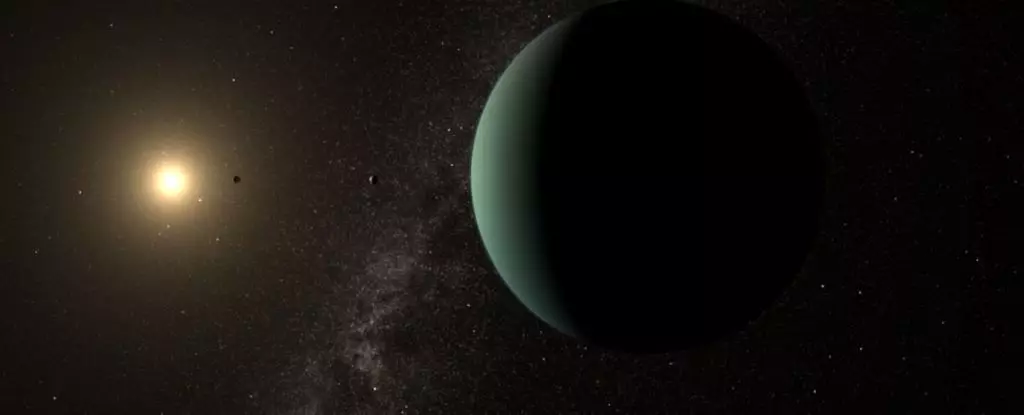Recent discoveries in the field of exoplanet research have ignited excitement within the scientific community and beyond, particularly with the confirmation of a potentially habitable world known as HD 20794 d. Situated merely 20 light-years from our Solar System, this exoplanet presents a compelling case for the existence of life beyond Earth. As astronomers unravel the mysteries of this distant world, questions about the fundamental characteristics that support life persist. Is HD 20794 d capable of sustaining life forms akin to those on our planet?
The crux of identifying habitable exoplanets often revolves around the presence of liquid water, an essential ingredient for life as we know it. In assessing the viability of HD 20794 d as a habitable world, the exoplanet’s position within its star’s habitable zone becomes critical. This region, characterized by a specific distance from the star, provides the required circumstances where temperatures can allow for water to exist in liquid form. According to astrophysicists, the right conditions must strike a balance; if an exoplanet is located too close, the scorching heat could vaporize water, while being too distant could consign any residual water to an icy existence.
HD 20794, a yellow dwarf star similar to our Sun but slightly smaller and older, appears to host a promising environment for potentially life-sustaining planets. With its hydrogen-fusing lifecycle at a mature stage, the chance for neighboring exoplanets to stabilize increases, thereby fortifying the argument for life-sustaining properties.
The journey toward confirming the existence of HD 20794 d has not been straightforward. Although initial discoveries around HD 20794 were made in 2011 with the detection of three exoplanets, substantial difficulties hindered a more comprehensive understanding of this peculiar cosmic neighbor. In 2022, astrophysicist Michael Cretignier made a breakthrough by observing a faint wobble in the star’s spectrum—an indication of gravitational interactions hinting at the presence of an exoplanet. Through meticulous data analysis and further observations, the characteristics of HD 20794 d started to emerge more distinctly.
Weighing in at approximately 5.82 times the mass of Earth and featuring a radius that could range from 1.7 to 2.1 times that of our planet, HD 20794 d orbits its host star in a cycle lasting about 648 days. This orbit places the exoplanet within the star’s habitable zone for part of its travel, a critical factor in determining its capacity to support liquid water.
However, the promising outlook for HD 20794 d’s habitability comes with significant caveats. The exoplanet’s elliptical orbit means that it only occupies the habitable zone for part of its year, while at its furthest point—apastron—it strays into a region where conditions may become too cold for liquid water to exist.
Further complicating the picture, the precise physical attributes of HD 20794 d remain a mystery. Without a concrete understanding of the exoplanet’s radius, astronomers are unable to ascertain its density—a critical factor that would indicate its lithological nature. Should it have a smaller radius, the likelihood of a rocky surface similar to Earth increases. Conversely, a larger radius could categorize it as a “mini-Neptune,” which would alter its chances of being a mineral-rich world akin to our own.
The intriguing prospect of HD 20794 d, a neighbor in cosmic terms, raises tantalizing questions about the existence of life beyond Earth. As research continues and technology evolves, a brighter picture may emerge regarding the exoplanet’s composition and its potential to sustain life. Future space missions and advanced observational techniques could provide insights into its atmosphere and surface features, revealing whether this distant world could indeed host living organisms.
The discovery of HD 20794 d is not just an isolated achievement; it serves as a catalyst for understanding the conditions that govern habitability across the cosmos. Each new insight into exoplanets like HD 20794 d sharpens humanity’s ability to answer the profound question of whether we are alone in the universe. This exciting chapter in astronomy could redefine our understanding of life and its potential manifestations beyond the confines of our planet.

